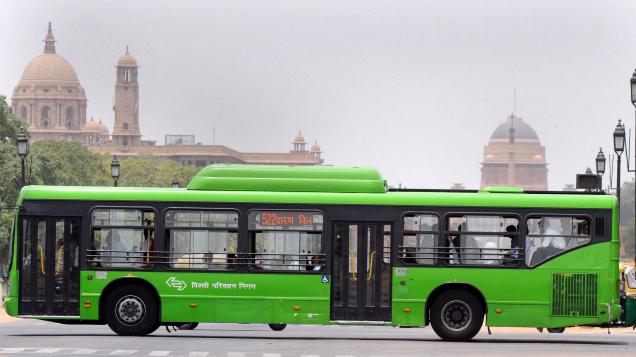Poor quality of education in government schools
Very few countries can match our range of education quality…
…Very few governments can match ours when it comes to negligence to education system.
All the problems lurking even after 63 years of independence can be linked in one or the other way, to failure of education system in our country. And all the failures in the education system can be ultimately linked to the government.
And the biggest failure is the inability of the establishment to create an education system, which can provide holistic education to all, whether the beneficiary can afford it or not. Improper preference during budget allocation, wastage of money in useless excursions, and mismanagement of allotted resources has ensured that benefits do not percolate to students of government schools. If you find a school with dilapidated buildings, pathetic facilities and absent teachers, you can bet that it is a government school.
The children are the nation’s most precious asset. Even the National Policy for Children (1974) declares so. But what you will is that more than half the students of 5th class can’t read a simple sentence and few don’t even have a clue of the basic alphabets of the language. How can a child with this type of learning carve out a healthy life for himself? And how can our country, with a concentration of such apathy, ever dream to become a superpower?
The quality of education imparted in government schools is plagued with so many troubles, that it would in itself exceed the word limits. So why don’t we concentrate on finding solutions… India is a country of extremes…. zenith and nadir within the same boundary. Where, on one hand, we see disgraceful state of education quality, on the other hand we also see institutions, which have changed the history and created a future for India.
Why can’t we use the latter to cure the former?
So the solution: The schools, colleges and universities, which have got their scholars through
meritorious ways, can be given a task of ‘adopting’ one such government school and use their own resources to enhance the quality of education.
Private schools: In a city or even a prominent towns at least, one can find a comparable number of government and private schools. Now, each government school can be established near a private (meritorious) school and the resources of that private like teachers, classes, playgrounds and other infrastructure can be used for providing quality education to the poor during those hours, when the facilities are lying unused. The interested students of higher classes can also be given a task to teach the deprived ones.
Meritorious colleges: The role played by them can be very much similar to that of good schools. But here, the challenge should be taken by the first and second year students, for whom the teaching should be an integral part of their learning for which they should be given extra credits. They can also be compensated through scholarships and fee waivers.
For the schools located in remote areas, the teaching can be done through projector and webcams in well-equipped rooms, by the distinguished teachers around the country.
In this way, we not only solve the deficiency of infrastructure and teachers, we also raise the quality of education provided to the deprived.
An alternate solution is proposed by Milton Friedman, who says ‘The most feasible way to bring about such a transfer from government to private enterprise is to enact in each state a
voucher system that enables parents to choose freely the schools their children attend.
The voucher must be universal, available to all parents, and large enough to cover the
costs of a high-quality education. No conditions should be attached to vouchers that interfere with the freedom of private enterprises to experiment, to explore, and to innovate’. This would result in the healthy competition among the schools to attract the government vouchers, and hence improving the overall quality of education as the power of choice is now in the consumers’ hand.
Coming back to the former option… it is imperative that such a novel step be backed up by some rigid parameters, so as to assess the effectiveness of the idea. For that, we need to see that how many respectable schools and colleges have the capacity to allow extra pressure of a government school i.e. availability of teachers, infrastructure and other resources, etc.
…Very few governments can match ours when it comes to negligence to education system.
All the problems lurking even after 63 years of independence can be linked in one or the other way, to failure of education system in our country. And all the failures in the education system can be ultimately linked to the government.
And the biggest failure is the inability of the establishment to create an education system, which can provide holistic education to all, whether the beneficiary can afford it or not. Improper preference during budget allocation, wastage of money in useless excursions, and mismanagement of allotted resources has ensured that benefits do not percolate to students of government schools. If you find a school with dilapidated buildings, pathetic facilities and absent teachers, you can bet that it is a government school.
The children are the nation’s most precious asset. Even the National Policy for Children (1974) declares so. But what you will is that more than half the students of 5th class can’t read a simple sentence and few don’t even have a clue of the basic alphabets of the language. How can a child with this type of learning carve out a healthy life for himself? And how can our country, with a concentration of such apathy, ever dream to become a superpower?
The quality of education imparted in government schools is plagued with so many troubles, that it would in itself exceed the word limits. So why don’t we concentrate on finding solutions… India is a country of extremes…. zenith and nadir within the same boundary. Where, on one hand, we see disgraceful state of education quality, on the other hand we also see institutions, which have changed the history and created a future for India.
Why can’t we use the latter to cure the former?
So the solution: The schools, colleges and universities, which have got their scholars through
meritorious ways, can be given a task of ‘adopting’ one such government school and use their own resources to enhance the quality of education.
Private schools: In a city or even a prominent towns at least, one can find a comparable number of government and private schools. Now, each government school can be established near a private (meritorious) school and the resources of that private like teachers, classes, playgrounds and other infrastructure can be used for providing quality education to the poor during those hours, when the facilities are lying unused. The interested students of higher classes can also be given a task to teach the deprived ones.
Meritorious colleges: The role played by them can be very much similar to that of good schools. But here, the challenge should be taken by the first and second year students, for whom the teaching should be an integral part of their learning for which they should be given extra credits. They can also be compensated through scholarships and fee waivers.
For the schools located in remote areas, the teaching can be done through projector and webcams in well-equipped rooms, by the distinguished teachers around the country.
In this way, we not only solve the deficiency of infrastructure and teachers, we also raise the quality of education provided to the deprived.
An alternate solution is proposed by Milton Friedman, who says ‘The most feasible way to bring about such a transfer from government to private enterprise is to enact in each state a
voucher system that enables parents to choose freely the schools their children attend.
The voucher must be universal, available to all parents, and large enough to cover the
costs of a high-quality education. No conditions should be attached to vouchers that interfere with the freedom of private enterprises to experiment, to explore, and to innovate’. This would result in the healthy competition among the schools to attract the government vouchers, and hence improving the overall quality of education as the power of choice is now in the consumers’ hand.
Coming back to the former option… it is imperative that such a novel step be backed up by some rigid parameters, so as to assess the effectiveness of the idea. For that, we need to see that how many respectable schools and colleges have the capacity to allow extra pressure of a government school i.e. availability of teachers, infrastructure and other resources, etc.


Comments